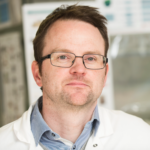Link to Pubmed [PMID] – 27009263
BMC Infect. Dis. 2016;16:138
BACKGROUND: A successful host immune response to infection is dependent upon both innate and adaptive immune effector mechanisms. Cutaneous leishmaniasis results in an adaptive Th1 CD4(+) T cell response that efficiently clears the parasite, but may also result in scaring. However the role of innate mechanisms during parasite clearance remains less well defined.
METHODS: We examined a unique cohort of individuals, living in a Leishmania major endemic region, that were stratified among 3 distinct clinical groups in a cross-sectional study. Specifically, patients were classified either as healed (n = 17), asymptomatic (23), or naïve to infection (18) based upon the classical Leishmanin Skin Test (LST) and the presence or absence of scars. Utilizing a multiplexed immunoassay approach we characterized the induced cytokine and chemokine response to L. major.
RESULTS: A subset of innate immune molecules was induced in all groups. By contrast, T cell-associated cytokines were largely induced in exposed groups as compared to L. major-infection naïve individuals. Two exceptions were IL-17A and IL-12p70, induced and not induced, respectively, in naïve individuals. In addition, GM-CSF was more strongly induced in healed patients as compared to the other two groups. Surprisingly an IL-13 response was the best cytokine for classifying previously infected donors.
CONCLUSIONS: Exploratory data analysis, utilizing principle component analysis (PCA), revealed distinct patient clusters of the healed and naïve groups based on the most differentially induced proteins. Asymptomatic previously infected individuals were more difficult to assign to a particular cluster based on these induced proteins. Analysis of these proteins may enable the identification of biomarkers associated with disease, leading to a better understanding of the protective mechanisms of immune response against leishmaniasis.





